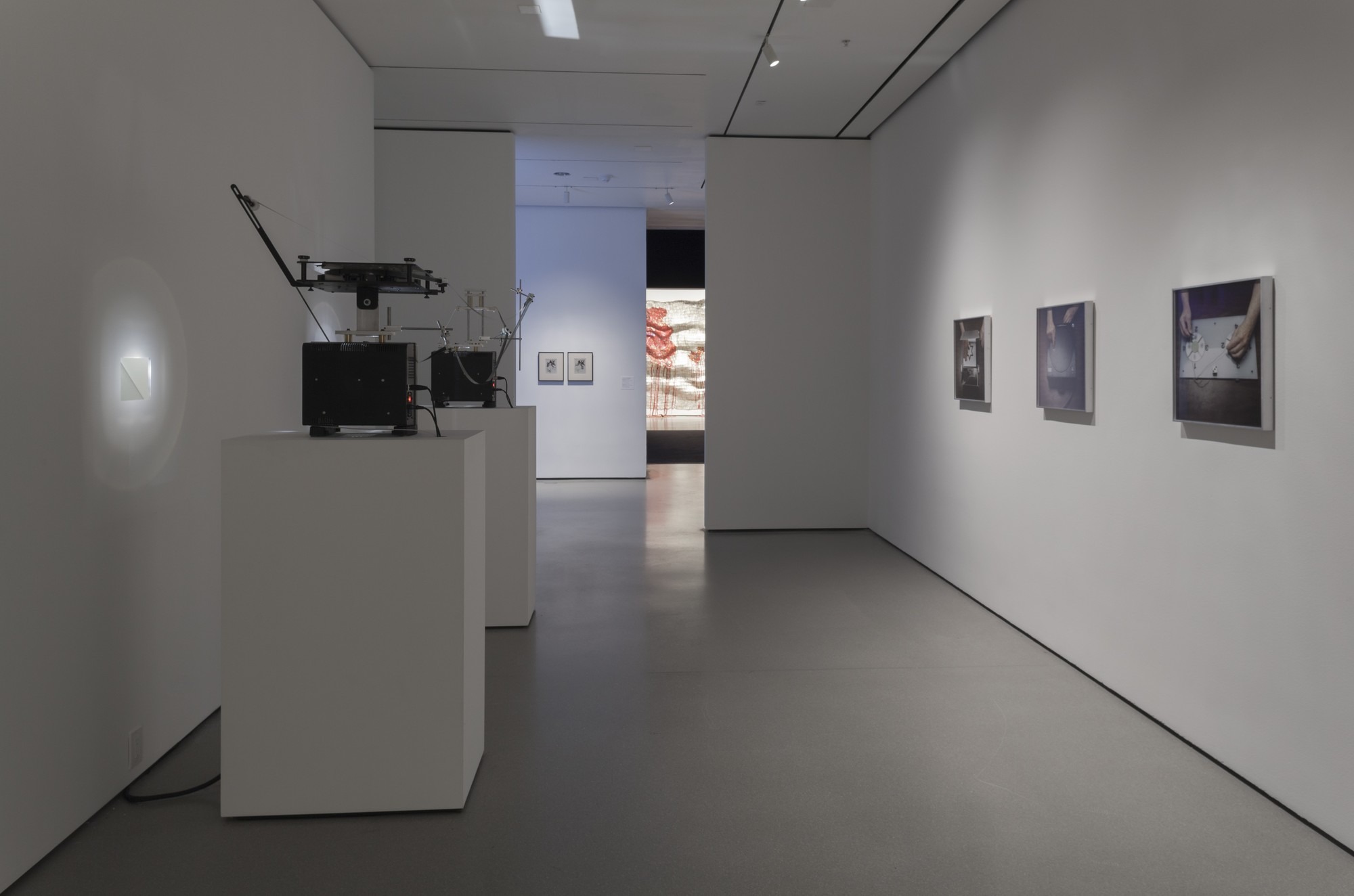Images of an Infinite Film
07 Sep 2013 - 02 Mar 2014

Installation view of the exhibition, "Images of an Infinite Film"
September 7, 2013–March 2, 2014. IN2260.10. Photograph by Thomas Griesel.
September 7, 2013–March 2, 2014. IN2260.10. Photograph by Thomas Griesel.
Images of an Infinite Film brings together works that, through structural or material intervention, emulate processes of human knowing or thought, function as scores for imagined films, or take form entirely in the mind of the viewer. Taking as a point of departure avant-garde filmmaker Hollis Frampton’s notion of an “infinite film,” which theorizes an overarching history of all recorded images and likens the universe to an endless film archive, the exhibition suggests a link between the precarious nature of memory, the fragility of film, and the subjective experience of assigning meaning to things in the world.
Kerry Tribe’s *H.M. *(2009)—a recent MoMA acquisition—constructs a speculative portrait of Henry Molaison (known in scientific literature as “Patient H.M.”), who was left with a radical form of amnesia after undergoing experimental brain surgery to treat epilepsy in 1953. A modified looping system presents two different parts of the film simultaneously, creating a dissonance that evokes Molaison’s continual "rewriting" of information. Poetic Justice (1972), part two in Frampton’s seven-part *Hapax Legomena *(1971–72), presents frame-by-frame instructions for a film to be completed by the viewer’s own reservoir of images and associations. Disrupted by a series of spatial and temporal inconsistencies, the work confounds the viewer’s desire to formulate a linear narrative.
Paul Sharits’s Untitled, from his Frozen Film Frame* *series (c. 1971–76), is comprised of hundreds of strips of film placed between suspended sheets of Plexiglas. Laying bare the tangibility of the medium itself, the work’s countless fragments unfold with the viewer’s stream of consciousness.
At first glance, David Lamelas’s *Time As Activity - Düsseldorf *(1969)—another recent MoMA acquisition—appears to document the city “as it is,” but before each shot, the viewer is confronted with its precise duration. The work is at once both pure structure and completely amorphous, underscoring the idea of time as a fiction. *Color Pieces *(1980), a video by Nan Hoover, deconstructs a fleeting moment into a subtly shifting topography of light and shadow.
Organized by Erica Papernik, Assistant Curator, Department of Media and Performance Art.
Kerry Tribe’s *H.M. *(2009)—a recent MoMA acquisition—constructs a speculative portrait of Henry Molaison (known in scientific literature as “Patient H.M.”), who was left with a radical form of amnesia after undergoing experimental brain surgery to treat epilepsy in 1953. A modified looping system presents two different parts of the film simultaneously, creating a dissonance that evokes Molaison’s continual "rewriting" of information. Poetic Justice (1972), part two in Frampton’s seven-part *Hapax Legomena *(1971–72), presents frame-by-frame instructions for a film to be completed by the viewer’s own reservoir of images and associations. Disrupted by a series of spatial and temporal inconsistencies, the work confounds the viewer’s desire to formulate a linear narrative.
Paul Sharits’s Untitled, from his Frozen Film Frame* *series (c. 1971–76), is comprised of hundreds of strips of film placed between suspended sheets of Plexiglas. Laying bare the tangibility of the medium itself, the work’s countless fragments unfold with the viewer’s stream of consciousness.
At first glance, David Lamelas’s *Time As Activity - Düsseldorf *(1969)—another recent MoMA acquisition—appears to document the city “as it is,” but before each shot, the viewer is confronted with its precise duration. The work is at once both pure structure and completely amorphous, underscoring the idea of time as a fiction. *Color Pieces *(1980), a video by Nan Hoover, deconstructs a fleeting moment into a subtly shifting topography of light and shadow.
Organized by Erica Papernik, Assistant Curator, Department of Media and Performance Art.
